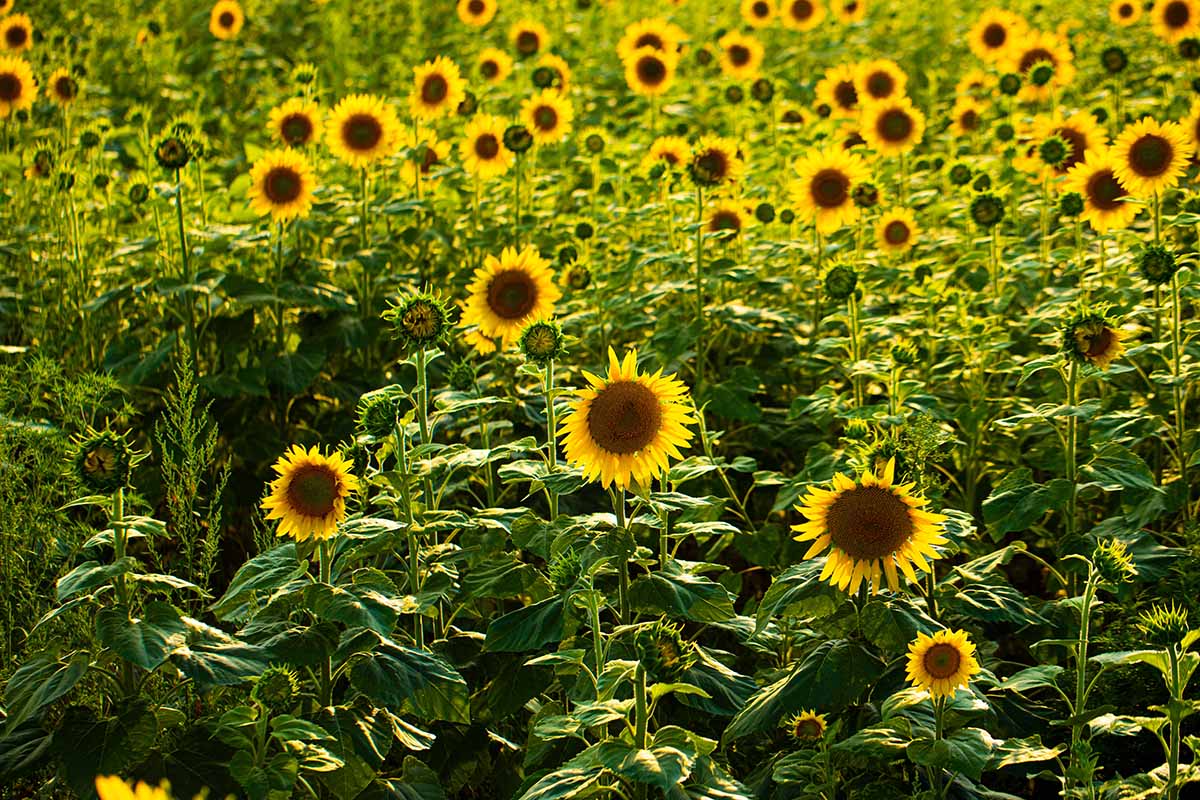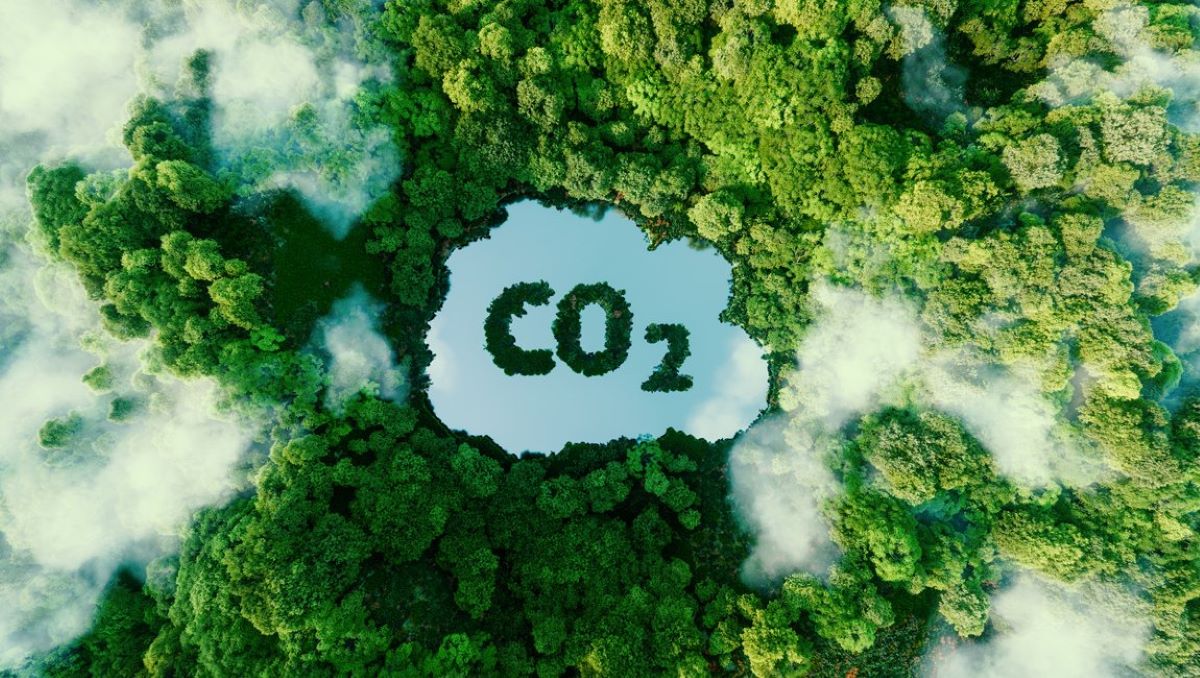Home>Gardening News and Trends>Gardening Trends>Which Type Of Climate Is Most Beneficial To Soil Formation?


Gardening Trends
Which Type Of Climate Is Most Beneficial To Soil Formation?
Published: February 12, 2024
Discover the gardening trends that create the ideal climate for soil formation. Uncover the secrets to promoting healthy soil and maximizing your gardening success.
(Many of the links in this article redirect to a specific reviewed product. Your purchase of these products through affiliate links helps to generate commission for Chicagolandgardening.com, at no extra cost. Learn more)
Table of Contents
- Introduction
- Factors Influencing Soil Formation
- The Role of Climate in Soil Formation
- The Relationship between Climate and Soil Composition
- The Impact of Temperature on Soil Formation
- The Influence of Precipitation on Soil Development
- The Significance of Vegetation in Soil Formation
- The Effects of Climate Change on Soil Formation and Erosion
- Conclusion
Introduction
Welcome to the exciting world of gardening trends! Gardening has always been a popular hobby, but in recent years, it has experienced a surge in interest and innovation. People are embracing gardening not only as a way to beautify their surroundings but also as a means to connect with nature, promote sustainability, and enhance their well-being. Whether you are a seasoned gardener or just starting out, it’s essential to stay informed about the latest trends that can help you create a thriving and vibrant garden.
As with any field, gardening is not immune to trends. What works in one season may fall out of favor the next. Keeping up to date with the latest gardening trends allows you to incorporate fresh ideas, experiment with new techniques, and keep your garden ahead of the curve. In this article, we will explore some of the most exciting gardening trends that are currently making waves in the gardening community.
From unique planting methods to innovative gardening tools, these trends are reshaping how we approach gardening and enabling us to unleash our creativity. Whether you have a small balcony or a sprawling backyard, there is a trend that will suit your space and style.
Ready to take your gardening game to the next level? Let’s dive in and discover the top gardening trends that will inspire you to create a stunning and sustainable garden that stands out from the crowd.
Factors Influencing Soil Formation
Soil, often referred to as the “skin of the Earth,” is a complex and dynamic ecosystem that provides essential nutrients and support for plant growth. The formation of soil is influenced by a multitude of factors, resulting in its wide diversity and varying characteristics. Understanding these factors is crucial for successful gardening and soil management. Here are the key factors that influence soil formation:
- Parent Material: The parent material, which is the original rock or sediment, plays a significant role in determining soil composition. Different types of parent materials, such as granite, limestone, or volcanic ash, can result in soils with distinct properties and nutrient contents.
- Climate: Climate, including temperature and precipitation patterns, greatly affects soil formation. The amount and frequency of rainfall, as well as temperature fluctuations, influence the rate of weathering and the availability of water for soil development.
- Topography: The shape and slope of the land impact soil formation. Steep slopes can lead to erosion, resulting in thinner soils, while flat or gently sloping terrain allows for deeper, more fertile soil to form.
- Organisms: The presence of living organisms, such as plants, animals, and microorganisms, significantly influences soil formation. The decaying organic matter from plants and animals contributes to the development and enrichment of soil, while the activities of soil organisms help in the breakdown of organic materials.
- Time: Soil formation is a slow process that occurs over hundreds to thousands of years. The length of time allows for the interplay of various factors, leading to the development of mature and well-structured soils.
These factors are interrelated and work together to shape the characteristics and fertility of soils. Understanding their influence can help gardeners make informed decisions about soil management and improve the health and productivity of their gardens.
The Role of Climate in Soil Formation
Climate plays a crucial role in soil formation. It influences the rate of weathering, the availability of water, and the development of organic matter – all of which contribute to the characteristics and fertility of soil. Let’s explore how different climatic conditions impact soil formation:
Temperature: Temperature affects soil formation by influencing the rate of chemical and biological processes. In warm climates, chemical weathering is accelerated, leading to faster breakdown of rocks and minerals. This can result in the formation of soils with finer texture and higher nutrient content. On the other hand, in cold climates, the freeze-thaw cycles can physically break down rocks, facilitating the creation of coarse-textured soils.
Precipitation: Precipitation patterns determine the amount and distribution of water in an area, which directly impacts soil formation. Regions with high rainfall tend to have well-drained soils due to excess water draining away. In contrast, areas with low precipitation may have poorly drained soils, leading to waterlogging and increased leaching of nutrients. Additionally, heavy rainfall can cause erosion, removing topsoil and affecting soil fertility.
Seasonal Variation: Seasonal variations in temperature and precipitation further shape soil formation. In areas with distinct seasons, such as temperate regions, the freezing and thawing of water within the soil can create cracks and fissures, promoting physical weathering. The cycling of freeze-thaw and wet-dry conditions also influences the movement of water and nutrients within the soil.
Wind: Wind erosion is particularly prominent in arid and semi-arid regions where vegetation cover is sparse. Strong winds can carry away finer soil particles, leaving behind coarser and less fertile soils. Wind can also deposit dust and sediments from other areas, contributing to the composition of soil in a particular region.
By understanding how climate influences soil formation, gardeners can make informed decisions on soil management. They can choose plants that are well-suited to the prevailing climate, implement effective drainage systems, and take measures to prevent erosion. Considering the climate enables gardeners to create optimal conditions for healthy and productive gardens.
The Relationship between Climate and Soil Composition
Climate plays a significant role in determining the composition of soil. The climatic conditions of an area, including temperature, precipitation, and seasonality, directly influence the processes of weathering, erosion, and organic matter decomposition. These processes ultimately shape the mineral content, texture, and fertility of the soil. Here, we explore the relationship between climate and soil composition:
Temperature: Temperature affects the rate of chemical reactions involved in soil formation. In warm climates, higher temperatures accelerate chemical weathering, leading to the breakdown of rocks and minerals. This results in the release of essential nutrients and the formation of soils rich in minerals like calcium and potassium. In contrast, cooler climates slow down chemical weathering, resulting in soils with a higher concentration of insoluble minerals.
Precipitation: Precipitation patterns have a significant impact on soil composition. In regions with high rainfall, excess water can leach soluble minerals, such as calcium and magnesium, from the soil profile. This leaching process often creates acidic soils with low fertility. On the other hand, in areas with low rainfall, minerals are less likely to be leached, leading to soils with a higher concentration of nutrients.
Seasonality: Seasonal variations in temperature and precipitation influence the composition of soil. Freeze-thaw cycles in temperate regions can physically break down rocks and minerals, contributing to the texture and mineral composition of the soil. Additionally, the cycling of wet and dry periods affects the movement of water and nutrients within the soil, influencing the availability of essential elements for plants.
Vegetation: The presence and type of vegetation in an area are closely related to the climate and significantly affect soil composition. Different plant species have varying nutrient requirements and influence nutrient cycling within the soil. The decomposition of plant material adds organic matter, which improves soil structure and nutrient content. Additionally, plant root systems contribute to the physical structure of the soil, promoting better water infiltration and nutrient uptake.
The relationship between climate and soil composition is complex and dynamic. It is important for gardeners to recognize these connections and adapt their gardening practices accordingly. By considering the climate and its influence on soil composition, gardeners can choose suitable plant species, amend the soil with necessary nutrients, and implement appropriate soil management techniques to optimize the health and fertility of their gardens.
The Impact of Temperature on Soil Formation
Temperature is a critical factor that significantly influences the process of soil formation. It affects the rates of both physical and chemical processes that shape the characteristics and fertility of soil. Let’s delve into the impact of temperature on soil formation:
Chemical Weathering: Temperature plays a vital role in chemical weathering, which involves the breakdown of rocks and minerals. Higher temperatures accelerate chemical reactions, resulting in faster weathering processes. The heat causes minerals to expand and contract, leading to the physical disintegration of rocks. Increased temperature also enhances the activity of soil microbes, promoting organic matter decomposition, and nutrient release.
Mineral Transformations: Temperature affects the transformation and composition of soil minerals. At high temperatures, minerals may undergo changes, such as the conversion of one mineral form to another. These transformations can affect the mineral makeup of the soil, impacting its fertility and nutrient availability. For instance, high temperatures can cause the conversion of certain minerals into more soluble forms, making them more accessible to plants.
Organic Matter Decomposition: Temperature influences the rate of organic matter decomposition in soils. Higher temperatures enhance microbial activity, leading to faster decomposition of organic material. This process contributes to the formation of humus, a dark, nutrient-rich component of soil. Humus enhances soil structure, nutrient retention, and water-holding capacity, all of which are crucial for the growth of healthy plants.
Soil Moisture: Temperature affects the movement and availability of soil moisture. Higher temperatures can increase evaporation rates and lead to drier soil conditions. This can impact soil development by altering the movement of water and nutrients within the soil profile. In arid regions, the combination of high temperatures and low precipitation can result in the formation of arid soils with limited fertility.
Freeze-Thaw Cycles: Temperature fluctuations, particularly in colder climates, can cause freeze-thaw cycles that impact soil formation. When water freezes, it expands, exerting pressure on the surrounding soil particles. These cycles can physically break down rocks and minerals, contributing to the breakdown and disintegration of the soil. This process can result in the formation of coarse-textured soils with improved drainage characteristics.
Understanding the impact of temperature on soil formation is crucial for gardeners, as it enables them to make informed decisions about plant selection, soil management, and irrigation practices. By considering temperature patterns and their influence on soil, gardeners can create optimal conditions for healthy and productive gardens.
The Influence of Precipitation on Soil Development
Precipitation, in the form of rainfall or snowfall, has a profound influence on soil development. The amount, intensity, and frequency of precipitation directly impact the processes that contribute to soil formation. Let’s explore the various ways precipitation influences soil development:
Water Erosion: Precipitation can cause erosion, the process by which soil particles are detached and transported by water. Intense or prolonged rainfall can lead to the removal of the top layer of soil, known as topsoil, which often contains the highest concentration of organic matter and nutrients. The loss of topsoil through water erosion can affect soil fertility and reduce the ability of the soil to support plant growth.
Sediment Deposition: On the flip side, precipitation can also bring about the deposition of sediments. When water flows over the land, it can carry and deposit sediments from other areas, which can influence the composition and texture of the soil. Sediment deposition can contribute to the buildup of fertile soils in low-lying or floodplain areas.
Leaching: Precipitation plays a crucial role in leaching, the process by which water percolates through the soil, carrying dissolved substances along with it. Excess rainfall can cause the leaching of essential minerals and nutrients from the soil, which can lead to nutrient deficiencies. Leaching can be more pronounced in regions with high-intensity rainfall or in areas with well-drained soils.
Water Availability: Adequate precipitation ensures a sufficient water supply for plants and organisms living in the soil. The availability of water in the soil influences soil structure, nutrient uptake, and microbial activity. Regions with insufficient rainfall may experience drought conditions, leading to dry and compacted soils with limited fertility.
Moisture Distribution: Precipitation patterns also impact the distribution of moisture within the soil profile. Well-distributed rainfall helps maintain a balanced soil moisture regime, allowing for optimal plant growth and nutrient uptake. Conversely, uneven rainfall distribution can result in moisture stress in certain areas, promoting the development of patchy or poorly developed soil zones.
By understanding the influence of precipitation on soil development, gardeners can adopt practices that maintain soil health and fertility. Implementing strategies like erosion control measures, mulching, and appropriate irrigation techniques can mitigate the negative effects of excessive rainfall and improve water management in the garden.
The Significance of Vegetation in Soil Formation
Vegetation plays a crucial role in soil formation. Plants and vegetation cover have a profound influence on the physical, chemical, and biological properties of soil. Let’s explore the significance of vegetation in soil formation:
Organic Matter Accumulation: One of the key contributions of vegetation to soil formation is the accumulation of organic matter. When plants die and decay, they add organic material to the soil. This organic matter improves soil fertility, enhances water-holding capacity, promotes soil aggregation, and increases nutrient availability for plants and soil organisms. Over time, the continuous incorporation of organic matter by vegetation helps build rich, fertile soils.
Nutrient Cycling: Vegetation plays a crucial role in nutrient cycling within the ecosystem. Through photosynthesis, plants absorb carbon dioxide and release oxygen, contributing to the balance of gases in the soil and atmosphere. The roots of plants uptake nutrients from the soil and, upon decomposition, release them back, enriching the soil with essential elements. This nutrient cycling strengthens the nutrient pool within the soil and sustains the long-term fertility of the ecosystem.
Soil Structure Improvement: The roots of plants penetrate and grow through the soil, creating channels and pore spaces. This process improves soil structure, allowing for increased water infiltration and air exchange, vital for the health of soil organisms. The root systems of plants contribute to soil stability, preventing erosion by binding soil particles together. The presence of vegetation cover also protects the soil from the impact of rainfall, reducing the risk of erosion.
Microbial Activity: Vegetation contributes to the thriving microbial community within the soil. The roots of plants release a variety of compounds and exudates that provide food and energy sources for beneficial soil microorganisms. These microorganisms, in turn, play essential roles in nutrient cycling, organic matter decomposition, and nutrient availability for plants. The symbiotic relationship between vegetation and soil microbes creates a dynamic and diverse soil ecosystem.
Erosion Prevention: The presence of vegetation cover acts as a natural barrier against soil erosion. The roots of plants anchor the soil, preventing it from being washed or blown away by wind or water. When vegetation cover is absent or disrupted, such as in areas affected by deforestation or land disturbance, soil erosion can occur more easily, leading to the loss of topsoil and reduced soil quality.
Understanding the significance of vegetation in soil formation allows gardeners to maximize the benefits it provides. By cultivating a diverse range of plants, adding organic matter through composting or mulching, and preserving natural vegetation cover, gardeners can create and maintain healthy soils that promote robust plant growth and sustainable gardening practices.
The Effects of Climate Change on Soil Formation and Erosion
Climate change is having significant impacts on the process of soil formation and erosion. The changing climate patterns, including rising temperatures, altered precipitation levels, and extreme weather events, are disrupting the delicate balance of soil development. Let’s explore the effects of climate change on soil formation and erosion:
Accelerated Soil Erosion: Climate change contributes to increased soil erosion rates. Extreme rainfall events, combined with lack of vegetation cover due to drought or land use changes, can cause significant erosion. The heightened intensity and frequency of precipitation can lead to the rapid removal of topsoil, resulting in the loss of nutrients, decreased water-holding capacity, and reduced soil fertility.
Alteration of Soil Properties: Climate change influences the physical and chemical properties of soil. Higher temperatures can lead to increased rates of organic matter decomposition, reducing soil carbon storage. This loss of organic matter affects soil structure, nutrient availability, and water-holding capacity. Additionally, changes in precipitation patterns can cause fluctuations in soil moisture levels, affecting microbial activity and nutrient cycling.
Changes in Soil Nutrient Availability: Climate change can impact the availability of nutrients in the soil. Increased temperatures and altered precipitation patterns can lead to accelerated leaching of essential nutrients, such as nitrogen and potassium, from the soil profile. This can result in nutrient imbalances and deficiencies, affecting plant growth and productivity. Additionally, changes in soil pH due to increased carbon dioxide levels can impact nutrient availability and uptake.
Shifts in Soil Biota: Climate change affects soil organisms, including bacteria, fungi, and earthworms. Changes in temperature and moisture regimes can challenge the survival and functionality of soil microorganisms. These organisms play a critical role in organic matter decomposition, nutrient cycling, and soil structure formation. Disruptions in the soil biota community can disrupt these important processes, impacting soil fertility and overall ecosystem health.
Increased Vulnerability to Desertification: Climate change can exacerbate desertification, the process of land degradation leading to the expansion of desert-like conditions. Rising temperatures and reduced precipitation levels increase the risk of soil desertification. As water becomes scarcer and soil moisture declines, soil fertility decreases, making it increasingly difficult for vegetation to survive. This can result in the loss of productive land and the desertification of once-arable areas.
Recognizing the effects of climate change on soil formation and erosion is crucial for implementing appropriate mitigation and adaptation strategies. Protecting and restoring vegetation cover, implementing soil erosion control measures, practicing sustainable agricultural techniques, and reducing greenhouse gas emissions are important actions to preserve the health and resilience of soils in the face of climate change.
Conclusion
Gardening trends are constantly evolving, driven by our ever-growing understanding of soil formation and the impact of climate on gardening practices. By recognizing the factors influencing soil formation, understanding the relationship between climate and soil composition, and appreciating the significance of vegetation, gardeners can make informed decisions to create and maintain healthy, productive soils.
Climate has a profound influence on soil formation. Temperature affects the rate of weathering and mineral transformations, while precipitation patterns determine water availability and erosion processes. Vegetation plays a vital role in soil formation by contributing organic matter, enhancing nutrient cycling, improving soil structure, and preventing erosion. As gardeners, we must adapt our gardening practices to the changing climate conditions to mitigate the negative effects and create sustainable and resilient gardens.
Moreover, it is essential to consider the impact of climate change on soil formation and erosion. The increasing frequency of extreme weather events and altering precipitation patterns pose challenges to soil health and fertility. Recognizing these effects allows us to implement appropriate measures to mitigate erosion, replenish organic matter, and maintain optimal soil conditions for plant growth.
In conclusion, staying informed about the factors influencing soil formation, the role of climate in soil composition, the significance of vegetation, and the effects of climate change on soil formation and erosion is crucial for gardeners to adapt and innovate in their gardening practices. By embracing the latest gardening trends, incorporating sustainable techniques, and nurturing the health of our soils, we can create thriving gardens that contribute to the beauty, sustainability, and well-being of our natural environment.




